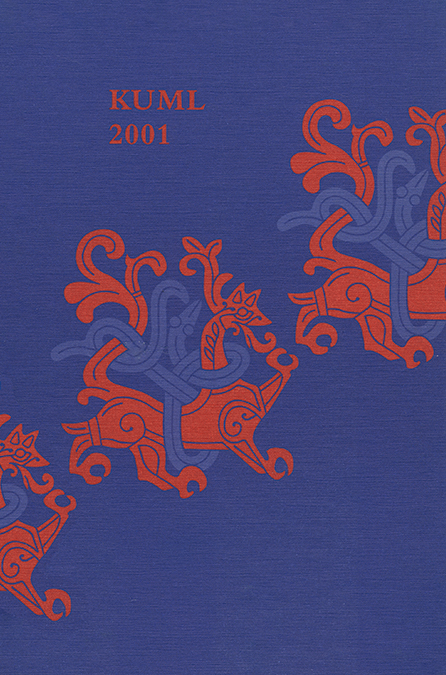Introduktion til en krise
DOI:
https://doi.org/10.7146/kuml.v50i50.103165Nøgleord:
MuseerResumé
Introduction to a Crisis”Introduction to a crisis” was the headline of chapter one in the Swedish professor of archaeology, Carl-Axel Moberg’s book from 1969, ”An Introduction to Archaeology” (”lntroduktion till arkeologi”). The same phrase could be applied to archaeology in Denmark today. Soon most archaeological sites will have been ploughed away or destroyed in other ways. Most excavations today are thus rescue excavations that are not studied or publicised sufficiently. The museums cannot afford to employ scientific staff on a permanent basis, but at the same time the universities produce an increasing number of scientists. The crisis is caused by a lack of financial resources in the academic as well as the museum environment. This situation is partly self-inflicted due to little new thinking, flexibility and integration in society. The question of relevance out side the academic world has been avoided for a long time and must now be taken into consideration.
The different academic disciplines that deal with history must be integrated to a larger extent in order to understand the mechanisms of culture and history. The disciplines have been segregated by method, which is in appropriate if they are to contribute to a broader understanding of society in the past, present and future. The separation and isolation of the disciplines have lead to a fragmented understanding of both history and culture and their relations to contemporary society. The uniting idea could lie within the idea of a ”new cultural history”. This concept infers the possibility of co-operating with modern culture studies and so a consciousness of the complicated structures and processes, which culture consists of and its impact on scholarly research. Just as science influences modern culture. This idea is seen in the light of a varied and complex communication theory (fig. 1), where the important aspect is the her meneutic circular movement of ”history consciousness” in society.
Such an understanding of communication processes implies that these aspects are introduced in the education of future culture historians, along with other issues concerning the public presentation of history and its implications on society. With the future development of the media industry, culture historians must be able to perform such tasks if history is to be used in society in a differentiated and constructive way. This strategy starts with a new understanding of the goal and purpose of the historic disciplines.
Henrik Hatt
Department of Information and Media Studies
Aarhus University
Downloads
Publiceret
2001-08-01
Citation/Eksport
Hatt, H. (2001). Introduktion til en krise. Kuml, 50(50), 239–252. https://doi.org/10.7146/kuml.v50i50.103165
Nummer
Sektion
Artikler
Licens
Fra og med årgang 2022 er artikler udgivet i Kuml med en licens fra Creative Commons (CC BY-NC-SA 4.0).
Alle tidligere årgange af tidsskriftet er ikke udgivet med en licens fra Creative Commons.


